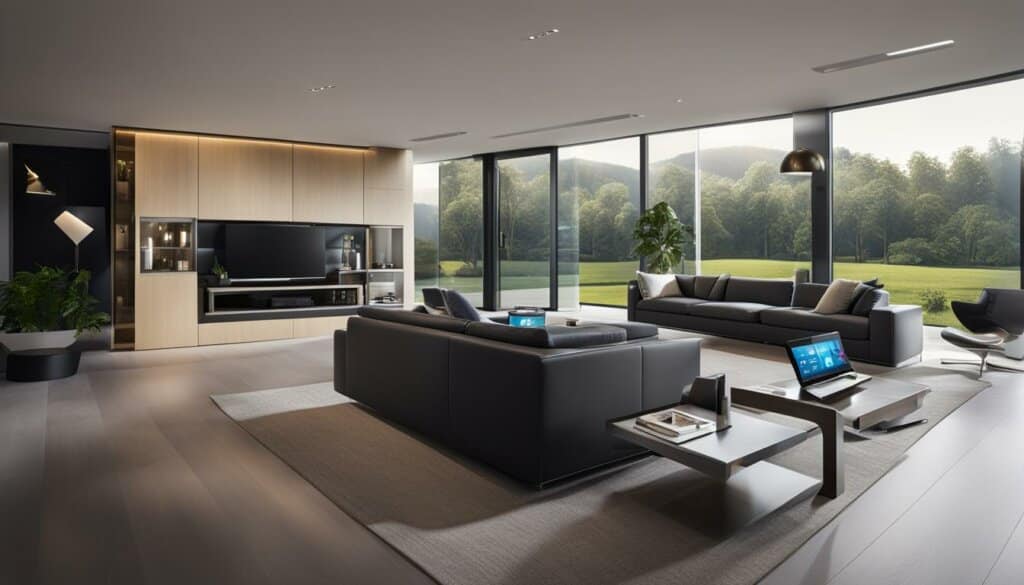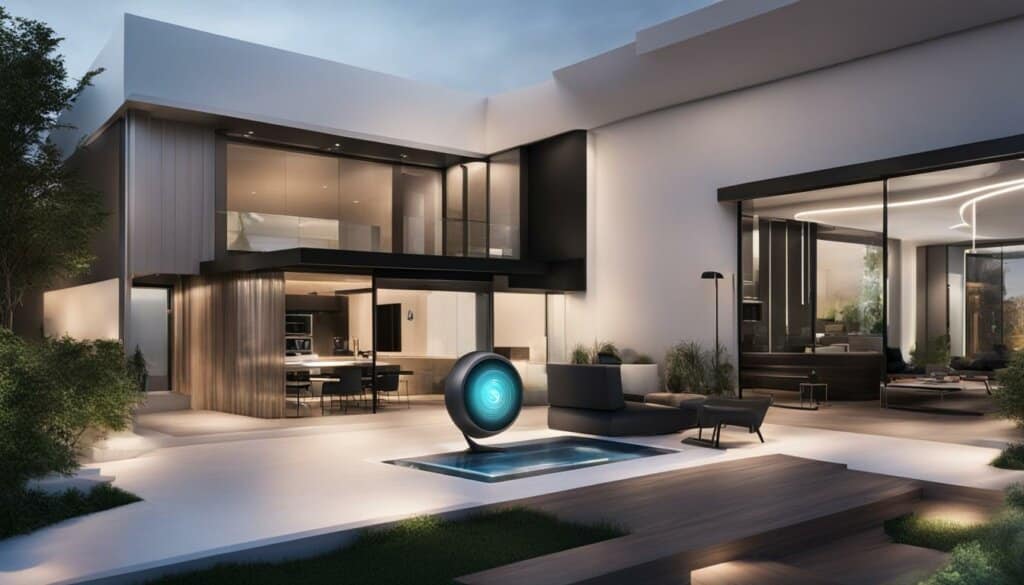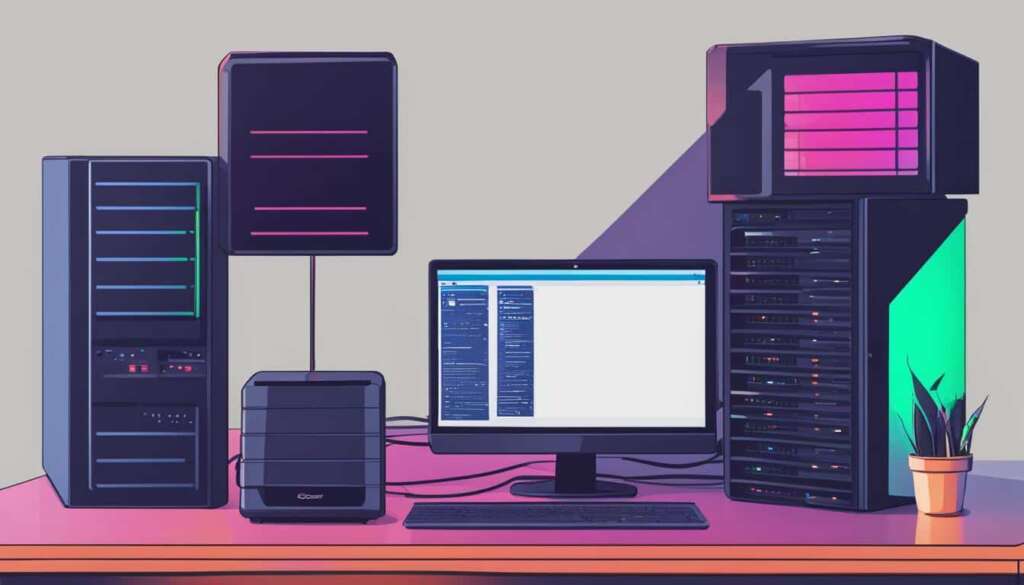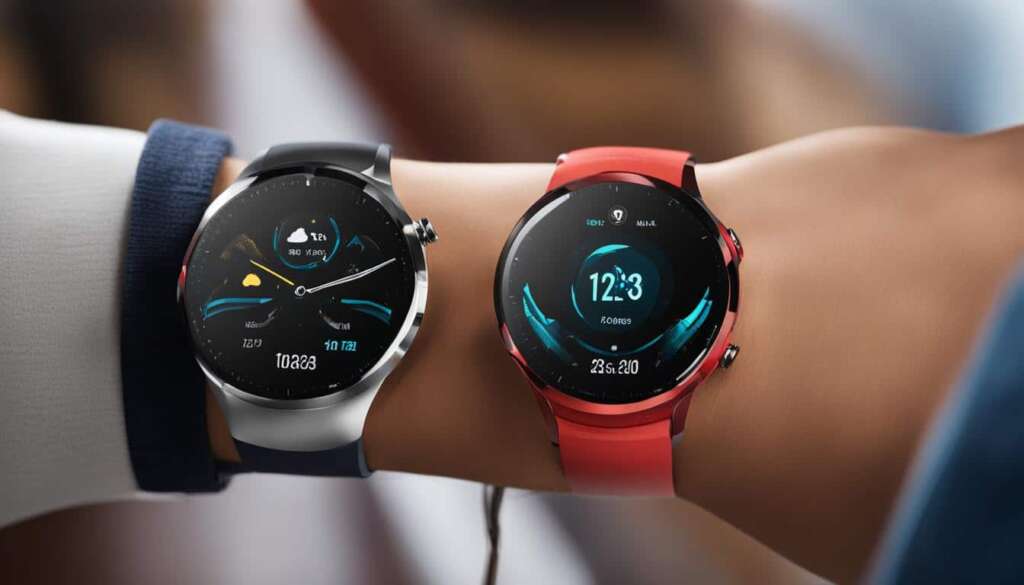Table of Contents
In an age where technology permeates every facet of our lives, it’s no surprise that our homes are becoming smarter, too. The rise of smart home automation apps has transformed how we interact with our living spaces, making our homes more efficient, convenient, and secure. This comprehensive article will take a deep dive into the world of smart home automation app development. From understanding the market statistics to exploring the intricacies of building a custom home app, we’ll equip you with the knowledge you need to engineer the future of smart living.
What do Market Statistics Say About Smart Home App Development?
Market statistics paint a promising picture of the demand for smart home solutions. According to research, the global smart home market is projected to exceed $141 billion by 2026. This growth can be attributed to several factors, including the increasing adoption of Internet of Things (IoT) devices, rising consumer awareness of energy efficiency, and the quest for enhanced security and convenience in our daily lives. Smart homes are no longer a luxury; they have become a standard feature of modern living.
“The global smart home market is projected to exceed $141 billion by 2026.”
One of the key drivers of smart home app development is the ever-expanding range of connected devices. From smart thermostats and lighting systems to voice-assistant enabled devices, the possibilities are endless. This has created a growing need for innovative and user-friendly apps that can seamlessly integrate these devices and provide a unified control interface for users.
Additionally, market statistics indicate that smart home apps are not limited to specific demographics. They cater to a wide range of users, including homeowners, renters, and even businesses. This opens up opportunities for developers to create diverse and tailored smart home apps to meet the unique needs and preferences of various users.
| Key Market Statistics | Insights |
|---|---|
| Global smart home market projected to exceed $141 billion by 2026 | Strong demand for smart home solutions |
| Increasing adoption of IoT devices | Driving the growth of smart home app development |
| Rising consumer awareness of energy efficiency | Key factor contributing to the demand for smart home solutions |
| Desire for enhanced security and convenience | Driving the adoption of smart home technology |
Types of Smart Home Applications
When it comes to smart home applications, there are two main categories to consider: standalone applications and integrated smart home platforms. Each has its own advantages and considerations, catering to different user preferences and requirements.
Standalone Applications
Standalone applications are individual apps designed for specific smart home devices or systems. These apps offer a high level of customization and control, allowing users to tailor their smart home experience to their liking. For example, if you have a smart thermostat, you can use a standalone app specifically designed for that device to adjust the temperature, create schedules, and monitor energy usage.
While standalone applications provide a great deal of flexibility, one downside is the need to manage multiple apps for different devices. This can lead to a fragmented user experience and make it challenging to navigate and control various smart home devices from a single interface.
Integrated Smart Home Platforms
Integrated smart home platforms, on the other hand, consolidate multiple devices under a single app or ecosystem. Examples of popular integrated platforms include Amazon Alexa and Google Home. These platforms offer a unified user experience, allowing users to control and monitor multiple devices from a single interface.
Integrated platforms provide seamless integration and compatibility between different devices, making it easier for users to manage their smart homes. By centralizing control, users can create automation routines, set up scenes, and control multiple devices simultaneously with voice commands or through the app. This streamlines the user experience and enhances the overall convenience of managing a smart home.
When choosing between standalone applications and integrated platforms, it’s important to consider factors such as customization needs, device compatibility, and the desired level of control. Both options have their merits, and the choice ultimately depends on individual preferences and the specific requirements of the smart home ecosystem.
| Standalone Applications | Integrated Smart Home Platforms |
|---|---|
| High customization | Unified user experience |
| Specific apps for devices | Control multiple devices in one app |
| Fragmented user experience | Seamless device integration |
| Individual control for each device | Automation routines and scenes |
5 Types Of Connectivity For Smart Home Devices
Smart home devices rely on various types of connectivity to ensure seamless communication and control. Understanding the different connectivity options is essential for building and operating a smart home ecosystem. Let’s explore the five key types of connectivity commonly used in smart home devices:
1. Wi-Fi
Wi-Fi is the most prevalent and versatile connectivity option for smart home devices. It provides high-speed internet access, allowing devices to connect to your home network and the internet. With Wi-Fi connectivity, you can easily control and monitor your smart home devices remotely through smartphone apps or voice assistants.
2. Bluetooth
Bluetooth enables short-range wireless communication between devices. It is commonly used for connecting smartphones, tablets, and other portable devices to smart home devices like speakers, thermostats, and lighting systems. Bluetooth connectivity is ideal for controlling devices in close proximity to each other.
3. Z-Wave and Zigbee
Z-Wave and Zigbee are wireless communication protocols specifically designed for smart home devices. These protocols are known for their reliability and the ability to create mesh networks. Z-Wave and Zigbee devices can form a network where all devices communicate with each other, extending the range and reliability of connectivity. They are commonly used for devices like smart locks, sensors, and lighting systems.
4. Thread
Thread is a low-power wireless IoT connectivity standard gaining traction in the smart home industry. It offers reliable and secure connectivity for smart home devices. Thread is designed to create robust mesh networks, allowing devices to communicate with each other and the central hub seamlessly. This connectivity option is commonly used for devices like thermostats, smart speakers, and security systems.
5. Cellular
Cellular connectivity, often used as a backup or standalone option, allows smart home devices to communicate over a cellular network. This type of connectivity is useful in areas where Wi-Fi or other traditional options are not available or reliable. Cellular connectivity is commonly used for devices like security systems and monitoring cameras.
Understanding the various connectivity options available for smart home devices is crucial for creating a robust and interconnected smart home ecosystem. Each connectivity type has its advantages and is suitable for different use cases. By choosing the right connectivity option for your devices, you can ensure smooth and reliable operation throughout your smart home.
How Does Smart Home Automation Work?
Smart home automation involves the integration of sensors and devices to create a connected and intelligent living environment. These sensors and devices collect data on various aspects such as temperature, occupancy, and security status, which is then processed and analyzed for predefined actions based on user preferences and automation rules. This data collection and processing are made possible through the connectivity technologies employed in smart home devices.
Connectivity plays a crucial role in smart home automation, enabling seamless communication and control between devices. The most common and versatile connectivity option for smart home devices is Wi-Fi, which provides high-speed internet access. Bluetooth, on the other hand, allows for short-range communication between devices. Additionally, there are wireless communication protocols specifically designed for smart home devices, such as Z-Wave and Zigbee, known for their reliability and ability to create mesh networks. Thread, a low-power wireless IoT connectivity standard, is also gaining traction in enabling reliable communication in smart home devices.
Once the data is collected and processed, smart home automation apps provide users with control and monitoring capabilities. These apps can be accessed through smartphone applications or voice commands, allowing users to interact with their devices remotely. Automation features enable users to create custom scenarios and predefined actions, enhancing convenience and efficiency in the smart home environment. Furthermore, integration with third-party services like voice assistants adds another layer of functionality to the smart home experience, allowing for seamless control and access to a wide range of services and devices.

In summary, smart home automation works by leveraging sensors and devices, connectivity technologies, data collection and processing, user control and automation features, remote access, and integration with third-party services. By bringing all these elements together, smart homes create a more efficient, convenient, and secure living environment for users.
Factors Affecting the Cost of Building a Smart Home Automation App
Building a smart home automation app involves several factors that influence its cost. These factors can vary depending on the complexity of features, the number of platforms and devices supported, the design of the user interface and user experience, the integration with hardware and APIs, the implementation of security measures, and the location and expertise of the development team.
The complexity of features is a crucial factor in determining the cost of a smart home automation app. The more advanced and intricate the features, such as voice control, energy management, and intelligent scheduling, the more time and effort are required for development.
Another cost factor is the number of platforms and devices the app is designed to work with. A single platform app will generally be less expensive to develop compared to one that supports multiple platforms, such as iOS and Android, and a wide range of smart home devices.
| Cost Factors | Description |
|---|---|
| Complexity of Features | The more advanced and intricate the features, the higher the development cost. |
| Platforms and Devices | The number of platforms and devices the app supports can affect the cost. |
| UI/UX Design | A well-designed user interface and user experience can add to the development cost. |
| Integration with Hardware and APIs | The integration with hardware and APIs may require additional development and testing. |
| Security and Data Privacy | Implementing robust security measures can increase the cost of development. |
| Location and Expertise of Development Team | The location and expertise of the development team can impact the development cost. |
Designing a user-friendly and visually appealing user interface and user experience (UI/UX) is another factor that can affect the cost of development. A well-designed UI/UX requires careful planning, wireframing, and iterative design processes, which can contribute to the overall development cost.
Integration with hardware and APIs is an important consideration when building a smart home automation app. This integration might involve working with third-party services, IoT devices, or even custom hardware solutions. The complexity of the integration and the testing required can impact the development cost.
Security and data privacy are critical aspects of any smart home automation app. Ensuring that user data is securely handled, implementing encryption measures, and following best practices for data privacy can add to the development cost.
Finally, the location and expertise of the development team can influence the cost of building a smart home automation app. Development teams based in regions with higher labor costs may charge more for their services. Additionally, teams with extensive experience in developing smart home apps may command higher rates due to their specialized knowledge and skills.
Summary:
Building a smart home automation app requires considering several factors that influence its cost. These factors include the complexity of features, the number of platforms and devices supported, the design of the user interface and user experience, the integration with hardware and APIs, the implementation of security measures, and the location and expertise of the development team. Thorough market research and careful project management can help mitigate cost overruns and ensure the successful development of a smart home automation app within budget.
Key Features of a Smart Home App
In order to provide a seamless and intuitive user experience, a smart home app should incorporate key features that enhance functionality, convenience, and security.
Easy User Registration
One of the essential features of a smart home app is easy user registration. This allows homeowners to create an account quickly and securely, granting them access to their smart home ecosystem. With a simple registration process, users can start enjoying the benefits of remote control and automation.
Remote Control and Automation
A smart home app should enable users to control their devices remotely, providing convenience and flexibility. Whether it’s adjusting the thermostat, turning on the lights, or locking the doors, the app should allow homeowners to interact with their smart home from anywhere, at any time. Additionally, automation capabilities can enhance the user experience by enabling predefined actions based on personalized settings, schedules, or sensor inputs.
Real-Time Push Notifications
Real-time push notifications are an important feature of a smart home app as they keep users informed about the status of their devices and security. Whether it’s receiving a notification when a door is opened, a motion is detected, or an appliance needs attention, these alerts provide homeowners with peace of mind and the ability to take immediate action.
User Roles and Permissions
Smart home apps should offer user roles and permissions functionality to ensure customized control and privacy. By assigning different roles to individuals within the household, homeowners can grant specific access rights and permissions to family members, guests, or service providers. This feature allows for a personalized and secure user experience, ensuring that each user has access to the appropriate features and controls within the smart home ecosystem.
| Key Features of a Smart Home App |
|---|
| Easy User Registration |
| Remote Control and Automation |
| Real-Time Push Notifications |
| User Roles and Permissions |
Benefits of Our Smart Home App Development Services
Looking to develop a smart home app that exceeds your expectations? Look no further! Our smart home app development services provide a range of benefits that will ensure your app stands out in the competitive market.
First and foremost, our team of experienced developers specializes in creating customized smart home apps tailored to your specific needs. Whether you’re targeting energy efficiency, home security, or convenience features, we have the expertise to bring your vision to life. We stay up-to-date with the latest technologies and trends in smart home automation to ensure that your app is cutting-edge and future-proof.
One of the key advantages of our services is our ability to seamlessly integrate your smart home app with a wide range of devices and third-party services. Whether it’s voice assistants, smart speakers, or other smart home devices, our developers will ensure that your app interacts flawlessly with any connected device, providing users with a unified and intuitive experience.

Lastly, our focus on enhancing user experience and satisfaction sets us apart. We understand the importance of a user-friendly interface and smooth navigation in a smart home app. Our team will work closely with you to design an intuitive UI/UX that enables seamless control and automation of smart home devices, while also offering real-time push notifications to keep users informed about their home’s status.
Table: Comparative Analysis of Smart Home App Development Services
| Features | Our Smart Home App Development Services | Competitor A | Competitor B |
|---|---|---|---|
| Customization | Highly customizable app tailored to specific needs | Limited customization options | Basic customization available |
| Integration | Seamless integration with a wide range of devices and third-party services | Limited device compatibility | Integration with select devices only |
| User Experience | User-friendly interface, intuitive navigation, and real-time push notifications | Complex interface, limited notifications | Inconsistent user experience |
| Expertise | Experienced team with knowledge of latest technologies and trends | Limited technical expertise | Limited experience in smart home app development |
By choosing our smart home app development services, you can be confident that your app will have a competitive edge in terms of customization, integration, user experience, and technical expertise. Contact us today to discuss your smart home app project and unlock the full potential of smart living!
Challenges Associated With Smart Home Automation App Development
Developing a smart home automation app comes with its fair share of challenges. Addressing privacy concerns is a top priority in the development process. With smart homes collecting vast amounts of data, ensuring user privacy and data security is crucial. Implementing robust encryption and authentication measures are essential to protect sensitive information from unauthorized access.
Another challenge is bridging the digital divide to make smart home technology accessible to all. While smart homes offer numerous benefits, not everyone has access to the required infrastructure and resources. This inequality needs to be addressed to ensure that everyone can benefit from the convenience and efficiency that smart home automation brings.
Additionally, smart home automation app development requires careful consideration of compatibility and integration with various smart home devices and systems. Ensuring seamless interoperability and ease of use across different platforms and devices can be a complex task. Developers must navigate different communication protocols and standards to create a cohesive and user-friendly experience for smart home users.
| Challenges | Solutions |
|---|---|
| Privacy concerns | Implement robust encryption and authentication measures |
| Digital divide | Address inequality and make smart home technology accessible to all |
| Compatibility and integration | Ensure seamless interoperability across different devices and platforms |
Conclusion
The future of smart homes is bright. Advancements in technology are paving the way for even more seamless, efficient, and interconnected living spaces. From market statistics to the integration of smart devices, automation, and convenience features, smart homes are transforming the way we live.
Connected living is the key to unlocking the full potential of smart homes. With the ability to adapt, protect, and enhance our lives, smart homes offer a glimpse into a future where our living spaces are intelligent and responsive.
As we continue to embrace the possibilities of connected living, we can look forward to homes that anticipate our needs, optimize energy efficiency, and enhance our comfort and security. The future of smart homes is not only about having the latest gadgets; it’s about creating living environments that seamlessly integrate technology to improve our daily lives.
So, whether it’s controlling our smart devices with a simple voice command or receiving real-time notifications about our home’s status, the future of smart homes holds immense potential. As technology continues to evolve, we can expect even more exciting innovations that will shape the way we live in the years to come.
FAQ
What is smart home automation?
Smart home automation involves integrating devices and systems to create a connected and intelligent living environment. It includes installing sensors and devices throughout the home, connecting them to a central hub or cloud-based platform, and using data processing and user preferences to automate actions and control the devices.
What are the types of smart home applications?
Smart home applications can be categorized into standalone applications and integrated smart home platforms. Standalone applications are individual apps for specific smart home devices or systems, while integrated platforms combine multiple devices under a single app or ecosystem, providing a unified user experience.
What types of connectivity are used for smart home devices?
Smart home devices utilize various types of connectivity, including Wi-Fi for high-speed internet access, Bluetooth for short-range communication, Z-Wave and Zigbee for wireless communication protocols designed for smart home devices, and Thread for low-power wireless IoT connectivity.
How does smart home automation work?
Smart home automation starts with installing sensors and devices throughout the home, which are then connected to a central hub or cloud-based platform. These devices collect data on aspects such as temperature, occupancy, and security status, which is processed and analyzed for predefined actions based on user preferences and automation rules. Users can control and monitor their smart home devices through smartphone apps or voice commands, and automation allows for custom scenarios.
What factors affect the cost of building a smart home automation app?
The cost of building a smart home automation app is influenced by factors such as the complexity of features, platforms and devices supported, UI/UX design, integration with hardware and APIs, security measures, and the location and expertise of the development team.
What are the key features of a smart home app?
A successful smart home app should offer features such as easy user registration, remote control and automation capabilities, real-time push notifications for status updates, and user roles and permissions for customized control. These features enhance user experience, convenience, and security in a smart home environment.
What are the benefits of smart home app development services?
Smart home app development services provide several benefits, including expertise in building customized smart home apps to meet specific needs, leveraging the latest technologies and trends, ensuring seamless integration with smart home devices and third-party services, and enhancing user experience and satisfaction in the smart home ecosystem.
What challenges are associated with the smart home automation app development process?
The challenges associated with smart home automation app development include addressing privacy concerns, ensuring data security, and bridging the digital divide to make smart home technology accessible to all. These challenges must be considered to create a future where smart homes are the norm and provide benefits for everyone.













